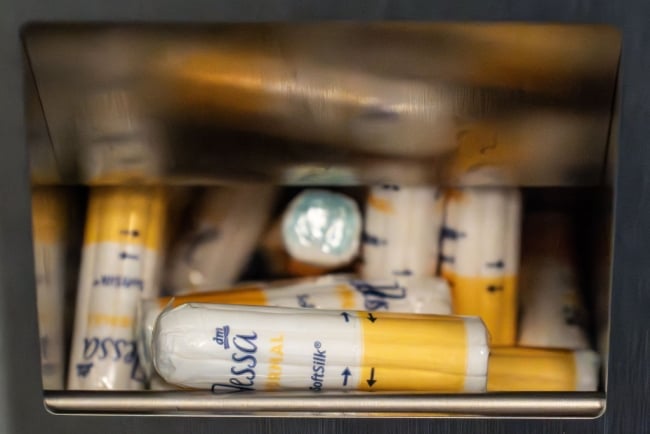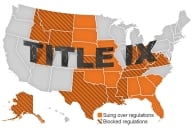You have /5 articles left.
Sign up for a free account or log in.

Colleges and universities are increasingly adding menstrual product dispensers to bathrooms across campus to improve student health and wellness.
picture alliance/Getty Images
When addressing basic needs, most colleges and universities seek to accommodate students with food, housing and funds for utilities, sometimes extending into clothing and personal hygiene products. Menstrual products, however, are an important facet of student health and wellness that can be overlooked in basic needs conversations.
Promoting access to no- or low-cost period products can support learners’ mental and physical health and wellness and decrease stigma and shame around a sensitive issue.
State of play: Paying for menstrual products can be a burden on students, with the average person paying around $6,000 before tax over the course of their reproductive lifetime, according to 2021 data. Students who don’t have access to menstrual products are more likely to miss class or say they feel shame or self-consciousness due to their period.
An October 2023 study found 20 percent of female college students were not familiar with the term “period poverty,” but 19 percent said they had experienced it, having to choose between purchasing menstrual products or covering other expenses. An additional 47 percent of students said they or someone they know has struggled to access menstrual products.
A 2021 study found women who frequently experienced period poverty were more likely to report moderate or severe depression compared to those who had never experienced period poverty.
Many states require that public schools provide menstrual products, but the practice isn’t as common at the college level. Student groups and organizations have lobbied for changes within their institutions, but period products must constantly be restocked and funded, requiring institutional buy-in.
Filling a need: To meet students where they are in needing menstrual products, colleges have deployed a variety of solutions, including:
- Creating an ordering system. Students, faculty and staff at the State University of New York, Brockport, can order tampons, pads or reusable menstrual products through an online form. The products are delivered to the student’s residence hall or the staffer’s department. Some of the students who used the form identified as transgender or nonbinary, highlighting a need to serve the LGBTQ+ community on campus with menstrual products, as well.
- Stocking the campus pantry. Salt Lake Community College has a food pantry stocked with hygiene products and, for the first time in January, a small supply of menstrual cups, which can reduce waste and serve as a more convenient option because they last longer than disposable products. The menstrual cups were incorporated into the pantry’s budget for the year, and staff plan to purchase more as inventory requires.
- Recruiting student organizations. Many college students are passionate about stamping out period poverty and willing to make change on their own campuses. Boston College’s Women’s Center and the Undergraduate Government of Boston College partnered to launch the Free, Period. program in fall 2023, which stocks free menstrual products in five bathrooms on campus, including at the recreation center and in academic buildings. Each station is restocked by volunteers and funded by the student government. At the University of California, Davis, a student group called Davis Period helps meet the need for menstrual products across campus and in the greater community.
- Placing dispensers in all-gender bathrooms. Often, menstrual products can be found in women’s restrooms but are not available more widely across campus, limiting access for nonbinary or transgender students, who may not use women’s bathrooms. College of the Desert both remodeled its single-use bathrooms to be gender-neutral facilities and stocked all of these restrooms with menstrual products.
- Building a campus map. Once supplies are available on campus, making sure students can identify and utilize these resources is the next step. Rice University’s student health ambassadors partnered with campus leadership to install menstrual product dispensers around campus and create a digital map layer to help students locate products. Student entrepreneurs at Georgia Institute of Technology created a web app that highlights available menstrual products on bathrooms and their stock level using a sensor. The app is in the prototype stage, but students hope to expand the tech to colleges across the country.
Do you have a wellness tip that might help others encourage student success? Tell us about it.








